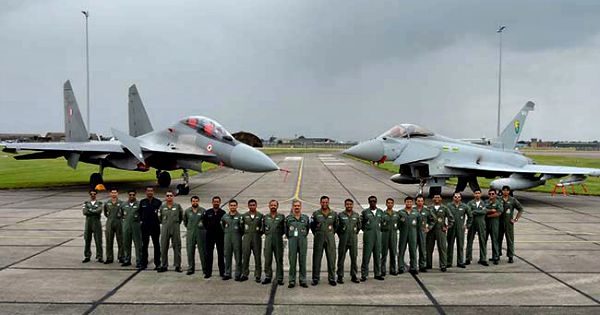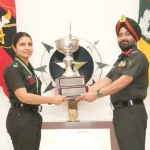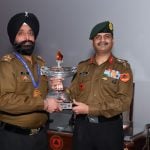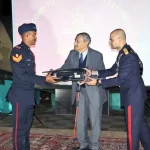In some of the most intense international air combat exercises ever featuring the Indian Air Force, IAF pilots flying Sukhoi 30 MKI fighters had a resounding 12-0 scoreline in their favour against Royal Air Force Typhoon jets in Within Visual Range (WVR) dogfighting operations.
A 190-member Indian Air Force contingent, backed by Su-30 fighters, IL-78 tankers, C-17 strategic and C-130J tactical airlift aircraft, left for the UK on 15th of July to take part in the fourth edition of ten-day long bilateral exercise ‘Indradhanush’.
The aim of the exercise was to enhance mutual operational understanding between the two Air Forces. The IAF aims to demonstrate its ability to project air power in transcontinental deployment of a task force comprising Su-30 MKI fighters, IL-78 tankers, C-17 strategic and C-130J tactical airlift aircraft in air operations.
In subsequent Large Force Exercises (LFE) which featured combined Typhoon and Su-30 formations, the IAF jets were somewhat less successful but consistently held an edge over the Typhoon.
The 10 day exercises which commenced on July 21 was the fourth edition of the Indo-UK Bilateral exercise. IAF aircraft and personnel were based out of three Royal Air Force bases: four IAF Su-30 fighters operated out of RAF Coningsby, C-17 and C-130J Hercules transports were positioned at Brize Norton and Garud Commandos of the IAF operated alongside British forces at RAF Honington. The IAF also deployed an Ilyushin IL-78 air to air refuelling tanker at Brize Norton.
The first week of the exercises pitted the Su-30, which NATO calls the Flanker, in a series of aerial dogfight scenarios. First, there were 1 v 1 encounters where a single jet of each type engaged each other in Within Visual Range (WVR) combat, firing simulated missiles to a range of two miles. The exercises progressed to 2 v 2 engagements with two Eurofighters taking on two Su-30s and 2 v 1 exercises where two Sukhois took on a single Typhoon and vice versa. Notably, in the exercise where a lone Su-30 was engaged by two Typhoons, the IAF jet emerged the victor ‘shooting’ down both ‘enemy’ jets.
In all dog fighting exercises, IAF Sukhois were able to turn sharply into the extremely agile Typhoons using their thrust-vectored engines to keep the RAF jets locked in their sights. The Su-30’s advanced Infrared Search and Track System (IRST), a passive sensor, which cannot be tracked, proved to be a distinct advantage for the IAF’s pilots in close-combat maneuvering. Both the IAF and RAF used the full capabilities of their onboard radars albeit in training mode, which meant that actual radar frequencies used in combat conditions were never exposed for confidentiality reasons. However, the detection ranges of the radars of both aircraft were not curtailed per se. This was air combat as close to the real thing as possible.
The pilots themselves ranged from young Flight Lieutenants to senior Group Captains from either side drawn directly from Typhoon squadrons and the IAF’s 2 Squadron, “The Winged Warriors” based in Kalaikunda. The idea was for both sides to expose their operational pilots to a modern frontline platform of the same class. Accordingly, the IAF did not deploy any senior pilots serving with its Tactics and Air Combat Development Establishment (TACDE).
By the time the exercises shifted to Large Force Engagements (LFE) in the second week, IAF pilots were comfortable operating in British conditions. The Large Force Engagements saw mixed formation scenarios where the IAF operated its jets alongside RAF Typhoons in air battles against fellow Su-30s flying together with other Typhoons.
Back in India now, the IAF, like the Royal Air Force, is keen to point out that the exercises were a learning and training opportunity, and should not be seen as a battle between the IAF and the RAF who are close allies and partners.
At the end of the day, though, for the IAF, these exercises were about gauging the skill levels of its own pilots and the aircraft they operate. For the IAF, these exercises came as positive news on where they stand against some of the best of the West.













